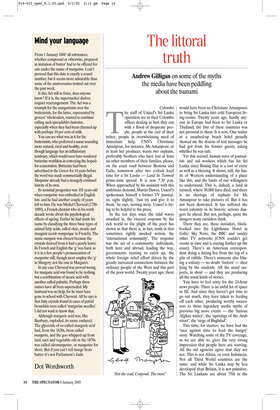Mind your language
From 1 January 1888 ‘all substances, whether compound or otherwise, prepared in imitation of butter’ had to be offered for sale under the name of margarine. I can’t pretend that this date is exactly a round number, but it seems more admirable than some of the anniversaries trotted out over the past week.
Is this Act still in force, does anyone know? If it is, the supermarket shelves require rearrangement. The Act was a triumph for the margarinists over the butterinists, for the latter, represented by grocers’ wholesalers, wanted to continue calling such spreadables butterine, especially when they had been churned up with perhaps 10 per cent of milk.
You can see what was in it for the butterinists, who preferred a name sounding more natural, rural and healthy, even though language has an inflationary tendency, which would soon have rendered butterine worthless in conveying the hopedfor connotation. Butterine had been advertised in the Grocer for 14 years before the word was made commercially illegal. Margarine already had a strangely confused history of its own.
Its nominal progenitor was 101 years old when margarine was embodied in English law, and he had another couple of years left to him. He was Michel Chevreul (17861889), a French chemist who in his tenth decade wrote about the psychological effects of ageing. Earlier he had made his name by classifying the three basic types of animal fatty acids, called oleic, stearic and margaric (acide margarique in French). The name margaric was chosen because the crystals derived from it had a pearly lustre. In French and English the ‘g’ was hard, as it is in a few people’s pronunciation of margarine still, though most employ the ‘g’ in Margery, not the one in Margaret.
In any case Chevreul was proved wrong, for margaric acid was found to be nothing but a combination of stearic acid with another called palmitic. Perhaps these names have all been superseded. My husband was no help, for he must have gone to school with Chevreul. All he says is that fatty crystals found in cases of putrid bronchitis were called ‘margarine needles’. I did not want to know that.
Although margaric acid was, like Bunbury, exploded, its name endured. The glyceride of so-called margaric acid had, from the 1830s, been called margarin, and the goo whipped up from lard, suet and vegetable oils in the 1870s was called oleomargarine, or margarine for short. But if you can’t tell marge from butter it’s not Parliament’s fault.
Dot Wordsworth










































 Previous page
Previous page